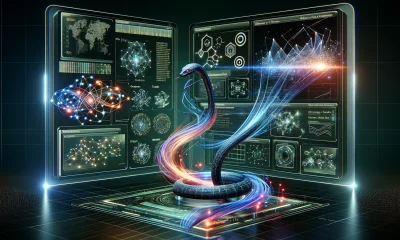Artificial Intelligence
Machine Learning Used To Uncover The Secrets Of Pompeii Scrolls

A team of scientists at the University of Kentucky that was able to, as The Guardian says, found in the holy ark of a synagogue in En-Gedi in Israel, and which contained text from the biblical book of Leviticus, is now involved in an even harder and more complex task – reading the carbonised scrolls left after the eruption of Mount Vesuvius in AD 79 in the Italian city of Pompeii.
While the team lead by Prof Brent Seales was able to read the parchment found in a synagogue in En-Gedi Israel with ‘just’ high-energy x-rays, this time around, due to the manner in which the Pompeii scrolls were made and written, they will have to use machine learning to try and solve the mysteries hidden in these scrolls.
They will test their prices on two unopened scrolls that belong to the Institut de France in Paris and are part of a collection of about 1,800 scrolls that was first discovered in 1752 during excavations of Herculaneum. As The Guardian points out, they make up the only known intact library from antiquity, with the majority of the collection now preserved in a museum in Naples.
Professor Seales explained the problem his team faces – “although you can see on every flake of papyrus that there is writing, to open it up would require that papyrus to be really limber and flexible – and it is not anymore.” The problem also lies in the fact that“while the En-Gedi scroll contained a metal-based ink which shows up in x-ray data, the inks used on the Herculaneum scrolls are thought to be carbon-based, made using charcoal or soot, meaning there is no obvious contrast between the writing and the papyrus in x-ray scans.”
To be able to resolve the problem, the team has decided to use both high-energy x-rays and artificial intelligence. The method they are using involves photographs of scroll fragments with writing visible to the naked eye. These are then fed to “teach machine learning algorithms where ink is expected to be in x-ray scans of the same fragments, collected using a number of techniques.”
The team is guided by the concept that “the system will pick out and learn subtle differences between inked and blank areas in the x-ray scans, such as differences in the structure of papyrus fibers.” After the system is trained on these fragments, the idea is to apply it to the data from the intact scrolls and hopefully, that will reveal the text that is contained in the scrolls.
Seals added that the team has finished collecting the x-ray data and is now in the process of training the designated algorithms, which will then be applied to the scrolls in the coming months. “The first thing we are hoping to do is perfect the technology so that we can simply repeat it on all 900 scrolls that remain [unwrapped].”
Talking about the importance of possible discoveries, Dr. Dirk Obbink, a papyrologist and classicist at the University of Oxford, also involved in the project said that there is a possibility that the text might be in Latin. He added that “a new historical work by Seneca the Elder was discovered among the unidentified Herculaneum papyri only last year, thus showing what uncontemplated rarities remain to be discovered there.”














